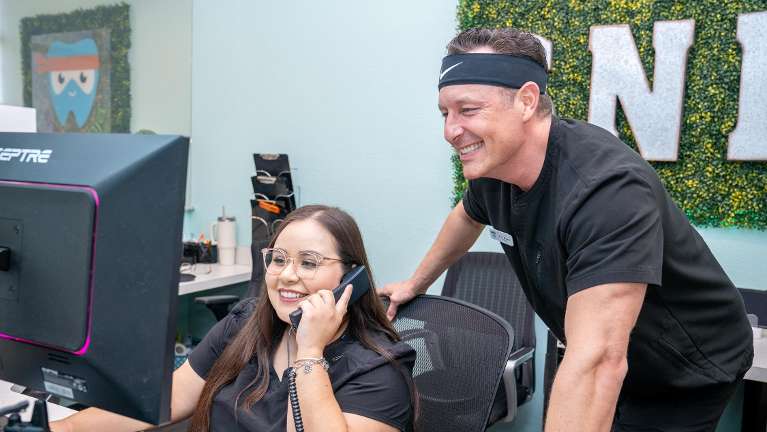
In taking every step towards ensuring that children in Fort Worth, Texas, have a comfortable dental experience, one important thing is knowing what sedation options exist. In most practices, the two commonly practiced are oral sedation and intravenous (IV sedation dentistry). Both of these methods focus on making dental operations easier on a young patient by lessening anxiety. It is important to understand the differences between pediatric oral sedation dentistry and IV sedation dentistry so you can make the best choices for your child. Let's look at how these compare to each other to assist you in your decision.
Oral Sedation
Oral sedation utilizes medication in pill or liquid form that your child will take prior to the actual dental appointment. It works by relaxing the patient, although this method will keep the child conscious and responsive during the procedure. This is a very effective form of sedation for children having mild to moderately severe anxiety issues. However, the level can vary depending upon the individual factor, and thus, the resultant effect is way slower than the IV sedation. This sedation level will not completely sedate your child and therefore is often referred to as a much less invasive option. For mild treatments and nervous children this can be an accessible and helpful option to make the dentist a more comfortable experience for families.
IV Sedation
IV sedation involves the administration of sedative medication directly into the blood via a vein. It is deeper and more effective and usually has a faster onset time than oral sedation. It's ideal for children with higher levels of anxiety or those undergoing longer or more invasive procedures. The level of sedation can be controlled by the dentist at any moment for the patient to be as comfortable as possible. However, IV sedation uses needle insertions, which may raise certain apprehension in children, and is usually more expensive since the additional training and apparatus are required. There are also specific certifications dentists must acquire to perform either IV sedation or Oral sedation.
How to Choose the Best Option
Both oral and IV sedation depend on several variables:
Anxiety Level: For mild to moderate anxiety, oral sedation might be enough, while for extreme anxiety or phobias, IV sedation may be better.
Procedure Complexity: Longer or more invasive procedures may benefit from the deeper sedation provided by IV sedation.
Medical History: Certain health conditions may make one method more suitable than the other.
Cost Considerations: Oral sedation is typically more affordable, while IV sedation incurs higher costs due to the need for specialized equipment and monitoring.
It is important to discuss with your dental care provider which sedation option is best for your child's particular needs, as every child has unique medical, emotional, and procedural considerations. Factors such as your child's anxiety level, medical history, the complexity of the procedure, and their ability to cooperate during treatment should all be taken into account. A comfortable and pain-free dental experience not only helps ensure the success of the procedure but also plays a crucial role in shaping your child's long-term perception of dental visits. Children who have positive experiences at the dentist from an early age are more likely to maintain good oral hygiene habits, attend regular check-ups, and feel less anxious about future treatments. By working with your dental care provider to choose the right sedation method, you can help create a stress-free environment that encourages your child to view dental care as a normal and non-threatening part of their health routine.
Smile Ninja Dental: Our Sedation Experts